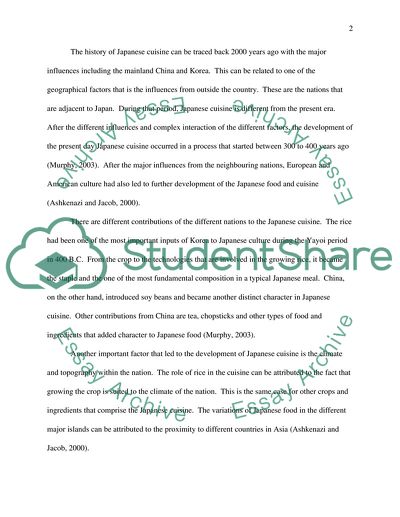Cite this document
(“Food and Society: Report on Japanese Food & Cuisine Assignment”, n.d.)
Food and Society: Report on Japanese Food & Cuisine Assignment. Retrieved from https://studentshare.org/environmental-studies/1558837-food-and-society-report-on-japanese-food-cuisine
Food and Society: Report on Japanese Food & Cuisine Assignment. Retrieved from https://studentshare.org/environmental-studies/1558837-food-and-society-report-on-japanese-food-cuisine
(Food and Society: Report on Japanese Food & Cuisine Assignment)
Food and Society: Report on Japanese Food & Cuisine Assignment. https://studentshare.org/environmental-studies/1558837-food-and-society-report-on-japanese-food-cuisine.
Food and Society: Report on Japanese Food & Cuisine Assignment. https://studentshare.org/environmental-studies/1558837-food-and-society-report-on-japanese-food-cuisine.
“Food and Society: Report on Japanese Food & Cuisine Assignment”, n.d. https://studentshare.org/environmental-studies/1558837-food-and-society-report-on-japanese-food-cuisine.


